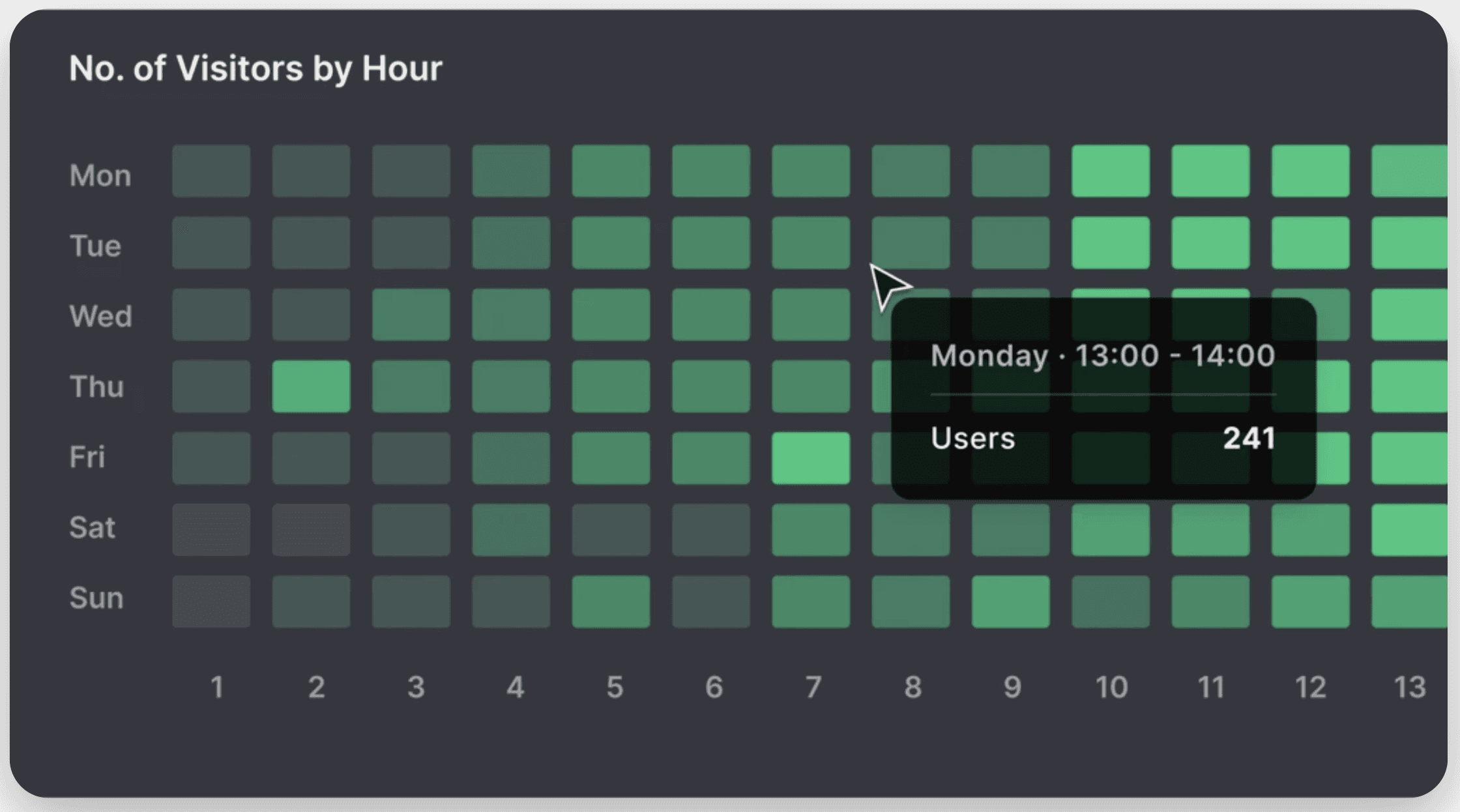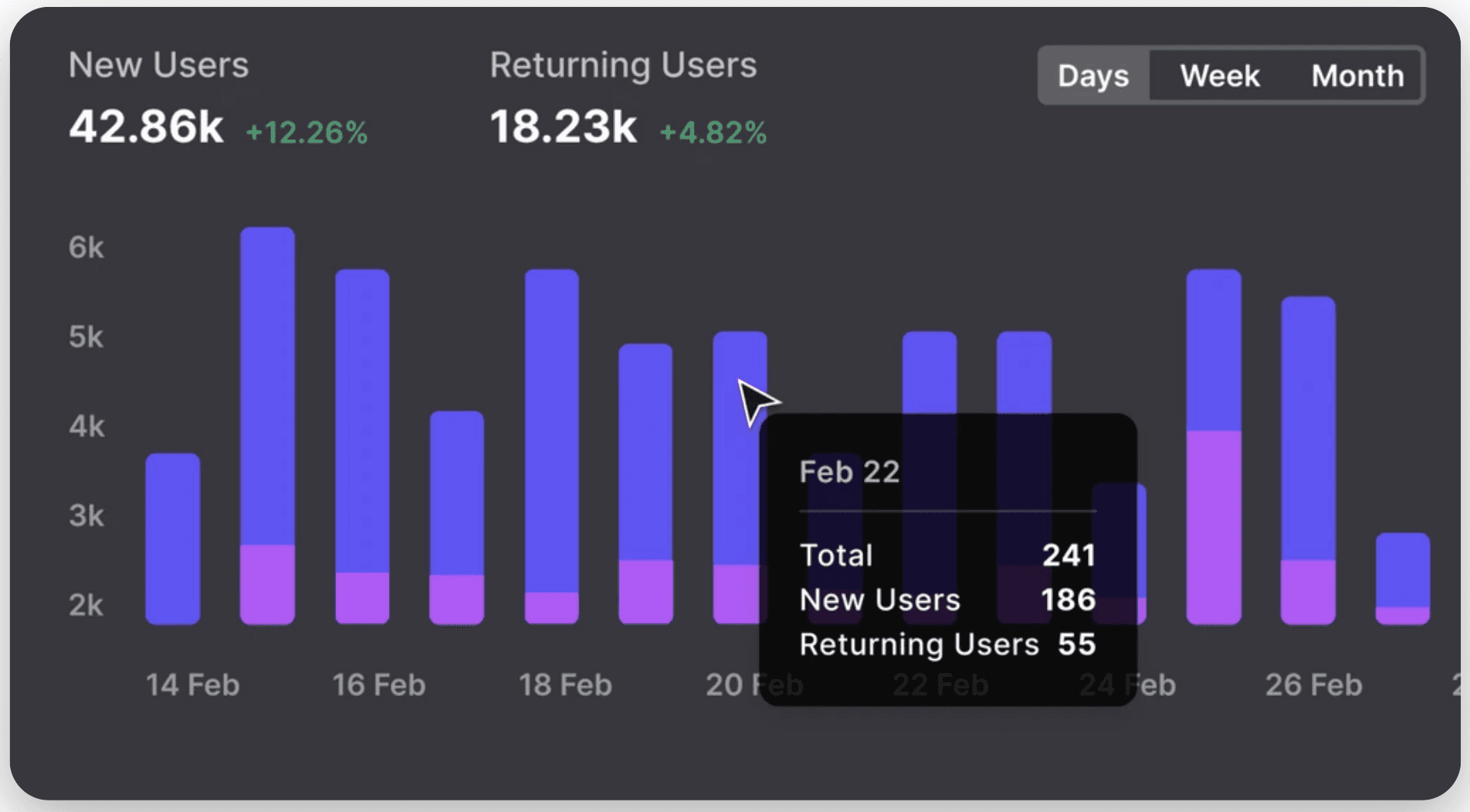Back to Blog
How Data and Analytics Drive Positive ROI in the Metaverse
Oct 18, 2023
Callum Moates
The metaverse, or the 3D internet, is a virtual space where individuals can meet, interact, and build communities. It's supported by technologies like virtual reality (VR), augmented reality (AR), head-mounted displays (HMD), the Internet of Things (IoT), artificial intelligence (AI), and spatial technologies, which help create an immersive metaverse experience. For brands, companies, and developers to provide engaging and relevant virtual experiences, they must rely on data collected from the metaverse. This blog dives into understanding the wealth of data the 3D internet possesses, the tools to analyze it, and the metrics to track success to ensure that brands can build data-driven experiences to help them achieve a significant return on investment (ROI).
The data goldmine of the metaverse
Due to its rich 3D environment with multiple data points, the metaverse is an information treasure trove. Organizations can use a user's digital footprint to infer information about the user's preferences and other traits that can help guide decision-making.
Businesses can collect user behavior data to understand how individuals interact with virtual environments, including their interests or likes, what causes them to move away from certain spaces, and what keeps them engaged for longer periods. With this information, brands can customize and improve the design and offerings in virtual stores, experiences, or events to cater to their target user.
User sentiment analysis in the metaverse also represents a significant facet of the 3D internet. In the metaverse, users engage in conversations, express emotions through text and emojis, and interact with virtual content. These interactions generate a wealth of data companies can harness to gauge user sentiment. By employing sentiment analysis tools and techniques, businesses and metaverse platforms can gain insights into the collective mood of their communities. For example, they can detect spikes in positive sentiment during successful virtual events or promptly identify and address negative sentiment when issues arise.
However, user privacy and data security will be paramount in the metaverse, where the data points collected hold more information than traditional 2D websites. Brands in the 3D internet must tread carefully, keeping ethics and safety at the forefront and ensuring explicit user permissions are taken for data collection.

Analytics tools for the metaverse
With the 3D internet’s rich data sets, analytics tools are essential to capture, combine, and analyze data from multiple sources, providing insights into user intent and preferences. With advanced algorithms, this data could also help forecast outcomes like level of engagement, possible pain points, and likelihood of repeat use.
VR and AR devices are key components of metaverse data collection that can reshape our understanding of users and their interactions. This data could encompass several dimensions: user movements, eye-tracking, social interactions, and physiological responses.
Here are some ways analytics tools help collect and track data in the metaverse:
Oculus Insight Data: Oculus Insight is a technology developed by Oculus for their VR headsets like Oculus Quest and Rift S. It offers precise and real-time positional tracking for both the headset and controllers, making the virtual reality experience more immersive. Collecting this data can help metaverse developers optimize experiences by changing environment layouts and scale to suit users. How a user responds to audio and visual cues through head or foot movements can be analyzed to create a favorable and engaging experience.
Adobe Analytics: Adobe Analytics recently announced its capability to allow brands to measure data in the metaverse. Within the metaverse, brands can gauge and assess distinct occurrences, like the extent of interaction with 3D elements and immersive encounters. They can also accumulate data regarding interactions spanning various metaverse platforms. This information can be integrated with insights from other sources, such as websites or mobile apps, to gain insights into evolving consumer tastes. Adobe also allows organizations to run predictive and customer journey analytics to uncover deeper insights like anticipated user churn, engagement, and user sentiment analysis.
Landvault Monetize: The Landvault Monetize platform offers a comprehensive no-code SDK designed to grow, measure, and monetize 3D worlds. A part of the Monetize software kit is a powerful analytics tool, 'Measurements and Insights' that provides in-depth user analytics in the metaverse, allowing businesses to measure everything from acquisition and retention to engagement to help drive a higher return on investment. The platform also collects granular data like user movement and specific actions taken within the space to track user behavior to optimize metaverse activations.

Number of visitors widget in Landvault Measurements & Insights tool
Metrics for measuring metaverse ROI
Here are a few key performance indicators (KPIs) for assessing ROI in the metaverse:
Visitors: This metric identifies the number of unique visitors who could be new or returning. If a brand’s metaverse activation attracts several unique visitors, it indicates greater brand awareness and exposure.
User acquisition: The total number of new users engaging within the company's metaverse presence is determined through this metric. A continuously growing user base reflects the brand’s popularity and marketing initiatives' effectiveness.
User retention: The percentage of first-time visitors who return to specific virtual spaces is tracked through user retention. A compelling 3D internet experience retains its audience over time and builds a loyal community, as evidenced by a high user retention rate.
Engagement metrics: This metric monitors user involvement by tracking activities completed and time spent in various virtual realms. Highly engaged users enjoy and actively participate in 3D internet content or experiences.
Dwell time: This metric estimates how much time individuals spend in various simulated environments within the metaverse to gauge their level of interest in the virtual world's offerings. It can be analyzed to optimize metaverse content and design to keep users in spaces longer.
Heatmaps and user movement: This data provides a detailed perspective on how individuals traverse and engage within the metaverse environment. Measuring this metric aids organizations in gaining a deeper understanding of user behavioral trends, pinpointing popular areas and potential congestion areas, and revealing locations where users might encounter challenges. These observations can guide decisions regarding spatial layout, enhancements to the user interface, and the metaverse's overall user experience, ultimately resulting in heightened user contentment and involvement.
Sale of virtual items: This metric tracks conversions like purchases of non-fungible tokens (NFTs) or digital items like virtual wearables, clothing, accessories, or even branded in-game items, helping companies keep an eye on how the metaverse is performing as a channel of revenue generation.
Brands operating in the metaverse must keep tabs on short-term and long-term ROI. In the short term, ROI helps generate quick results like increasing brand awareness through activations, launching new products to spark a buzz around sales, and building user engagement through interactive experiences. Alternatively, in the long term, organizations in the metaverse can focus on building a sizeable loyal community, incorporate monetization models to generate revenue and build a consistent and strong brand identity.

New and returning users widget in Landvault's Measurements & Insights tool
Future Trends in Metaverse Analytics
As we look ahead to the future of data in the metaverse in the coming years, it becomes evident that advancements are on the horizon. From AI-driven insights to enhanced user experiences, the 3D internet is poised to revolutionize how data is collected, analyzed, and utilized.
AI-powered insights
Analytics powered by AI will profoundly influence the metaverse. AI algorithms can analyze vast user data, like preferences, behaviors, and interactions, to create content tailored to users. Companies can create highly tailored virtual environments using this data, ranging from targeted advertisements to dynamic 3D worlds that react to the user’s activity. Imagine attending a virtual concert where the ambiance, music, and even the artist's performance are all controlled by powerful AI algorithms that react to the crowd's mood in real time.
Chatbots powered by artificial intelligence will revolutionize virtual customer service by continually monitoring user interactions, offering immediate replies, and predicting user inquiries based on prior trends.
As the future unfolds, artificial intelligence is bound to become an integrated part of metaverse experiences.
Blockchain technology for data security
Data security and protection will become increasingly vital as the metaverse grows. The blockchain will maintain the metaverse's data integrity as it can create an immutable record of all transactions and communications through its distributed ledger technology. This recording and storage of data will ensure that it is protected from malicious attacks and fraud. If blockchain technology is utilized for decentralized identity verification, customers may feel safer knowing that a single authority does not control their online identities.
Analytics at the center of experience building
Data analytics will drive the evolution of the 3D internet. Virtual experiences and environments within the 3D internet will increasingly rely on data to fine-tune spaces, personalize user interactions, and enhance content based on real-time data insights, creating more tailored experiences. From economic forecasting, where analytics will predict market trends and the value of virtual assets, to sentiment analysis, which gauges user reactions to events or changes, data will be the driving force behind decision-making.

Conclusion
The metaverse is still in its nascent stages, but as it grows, the role of data and analytics in achieving positive ROI will be paramount. Companies looking to mark their presence in this digital world and build meaningful relationships with users must adopt modern solutions and tools to collect and analyze data within the 3D internet. These data points will be vital in tailoring and optimizing brand offerings and anticipating future user behaviors. As the volume of data increases, companies in the 3D internet will also need to maintain data privacy, security, and consumer trust to ensure an enhanced user experience.
Are you looking to launch an immersive 3D experience for consumers? We can help you build, scale, monetize, and track data in the metaverse. Get in touch with us!
Oct 18, 2023
Callum Moates
Subscribe to our monthly newsletter
About Landvault
Landvault is building infrastructure to accelerate the metaverse economy, by building tools to create, deploy and monetize content. The company has helped over 200 clients enter the metaverse, including both Fortune 500 companies and government organizations like the Abu Dhabi government, Mastercard, L’Oreal, Red Bull, and Heineken. The company has raised a total of $40m over the past three years and continues to pioneer technological advancements.
